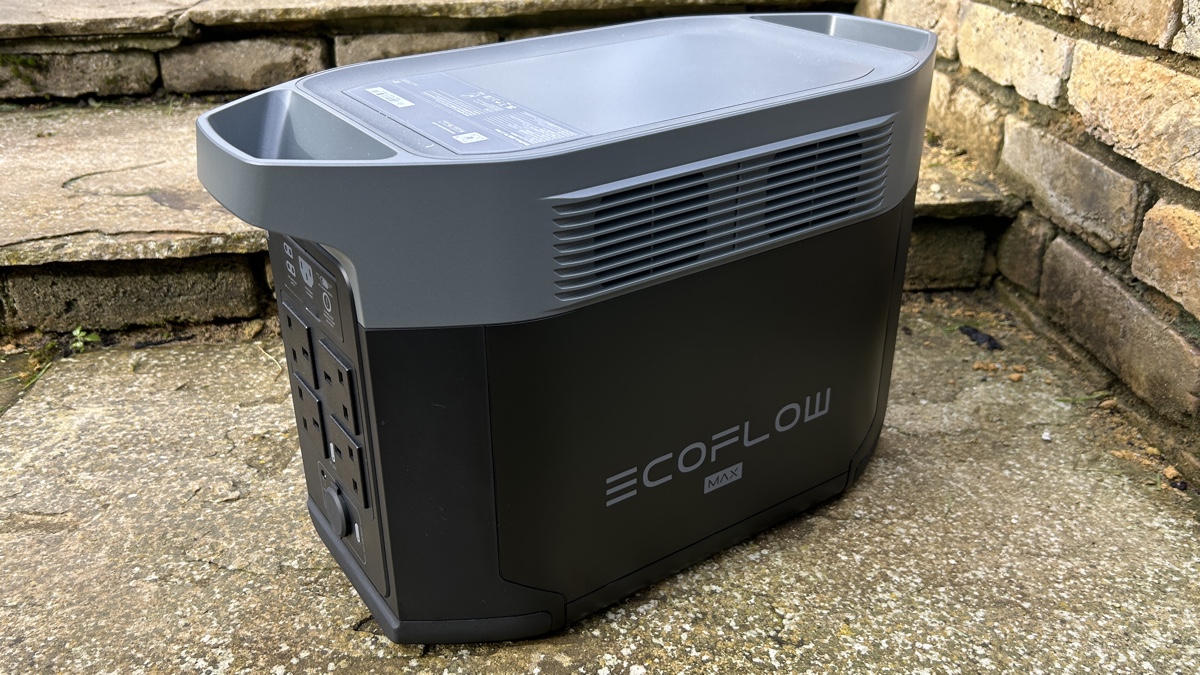
Portable power station put through its paces
In terms of raw power output, thanks to the X-Boost mode that cranks things up to 3100W, and the high capacity battery (which can actually be tripled with additional cells), the EcoFlow Delta 2 Max takes some beating in the ever-increasingly competitive market that it operates.
Whether you’re a regular camper who doesn’t want to go totally off-grid, you’re after a reliable back up solution for your home, or you’re looking to power a small remote building using solar then the Delta 2 Max ticks all of the boxes.
-
Expandable -
3100W power output possible -
Solar, AC and other charging options -
Multiple USB functions
Product name: Introduction
- Type: Portable power station
- 3100W output power
- X-Stream dual AC+Solar charging
Boasting a massive 2048Wh battery, four UK power outlets, and a robust 3100W maximum power output, the EcoFlow Delta 2 Max is engineered to deliver unparalleled power on the move, albeit with a weighty 23kg frame that stretches the definition of portability a bit.
Crafted for those demanding maximum power flexibility, this battery system stands out with its comprehensive features and long-lasting performance.
I’ve been living with the Delta 2 for a few weeks now, read my full review below…
Design and build
- 2048Wh capacity
- 4 x AC outlets
- Fast speed USB charging
While the EcoFlow Delta 2 Max looks a lot like its predecessor, the Delta 2, its weight significantly increases to 23kg – almost double – owing to the inclusion of a larger 2048Wh battery on board.
EcoFlow does actually state that the Delta 2 Max is the industry’s Lightest 2400W LFP Solar Generator and around 30% lighter than similar power stations on the market though, so it is ‘light’ for what you’re getting.
This substantial capacity means that it can store around 20-25% of the average UK home’s daily energy consumption.
Similar to previous EcoFlow models, the Delta 2 Max features convenient carry handles on each side, facilitating easy transportation but you will need some muscles to pick it up, with that 23kg of bulk.
As you’d expect the Delta 2 Max is generously equipped with a plethora of ports and outlets.
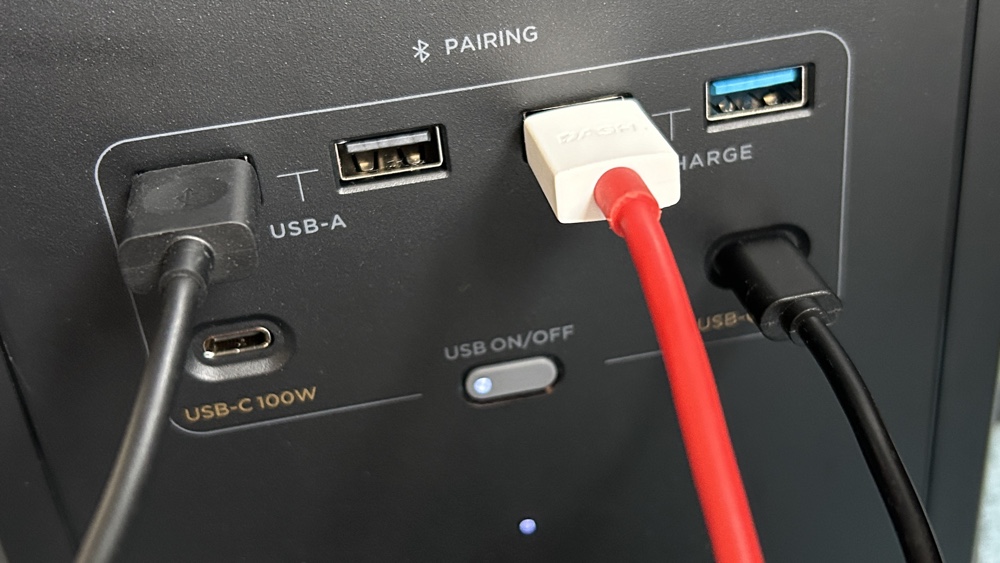

On one end, alongside the LCD and primary power button, you’ll find an array of different USB outputs, including two 100W USB-C ports suitable for keeping things like laptops and smart lamps powered up.
There are also four USB-A ports, with two of those marked as fast-charge ports (18W max per port), so perfect for things like charging your mobile devices.
A nice touch, with this section and the ‘bigger’ power outlets I’ll talk about more in a bit, is that there’s a power button to make these ports live; so no worrying that the unit is unnecessarily draining power.
On the opposite end you’ve got various power inputs and outputs, capable of doing much more than charging your smartphone.
On the UK model I had in for testing there are four AC power outlets, a pair of 3A DC outlets and a 12V car outlet.
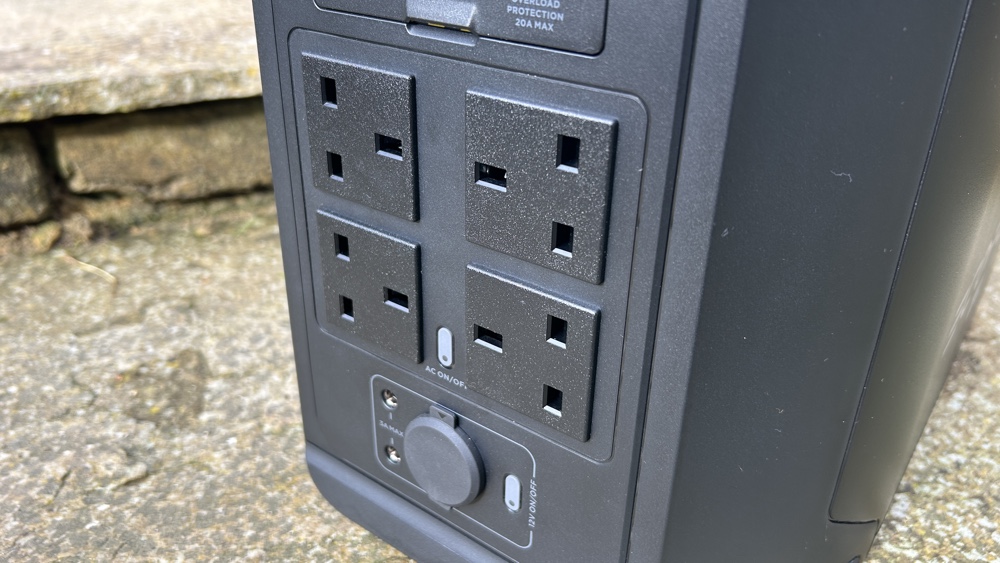

Like the USB options at the other end, there are also power buttons to fire these sections up, one for the AC options and one for your DC outlets down below (a male to female DC5521 lead is included in the box).
All of these inputs are intelligently arranged to prevent obstruction when plugging stuff in; as we all know, UK adapters can be very big and bulky and so it’s nice that some thought has gone into making room for multiple devices to be from plugged-in at the same time.
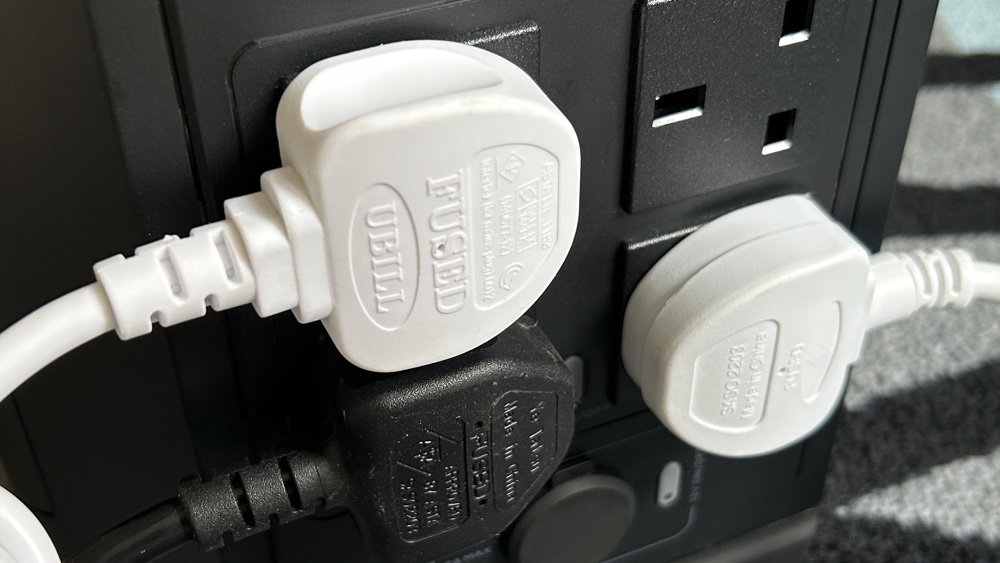

Power points
- Surge rating 4800W
- EPS capabilities
- 2 extra batteries can be added
All of the power sockets deliver a combined output of 2400W, with a surge rating of 4800W on offer.
However, activating the X-Boost mode elevates the output to 3100W, which surpasses standard household plug capabilities. That means you could have things like an AC unit plugged in, and also boil the kettle.
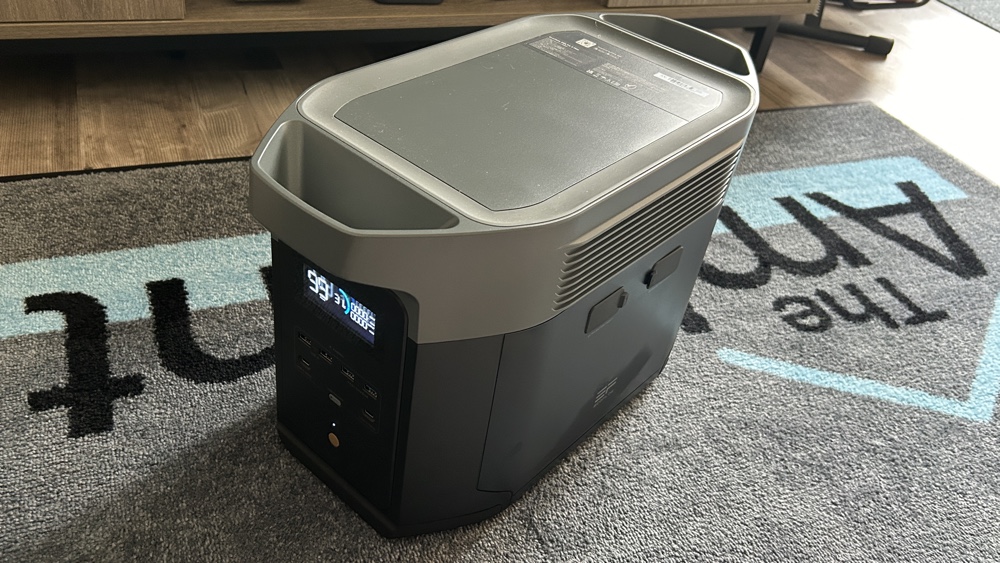

If you leave the Delta 2 Max constantly plugged in and charging up you can still have devices plugged into the unit itself and powered up. This makes it capable of acting as a backup to vital devices if mains power is lost.
It can also act as an Emergency Power Supply (EPS), whereby the battery will kick in after 30 minutes in the event of a power failure.
And you can protect yourself even further on this front by adding up to 2 more batteries to the mix, with a total 6kWH of backup power on offer.
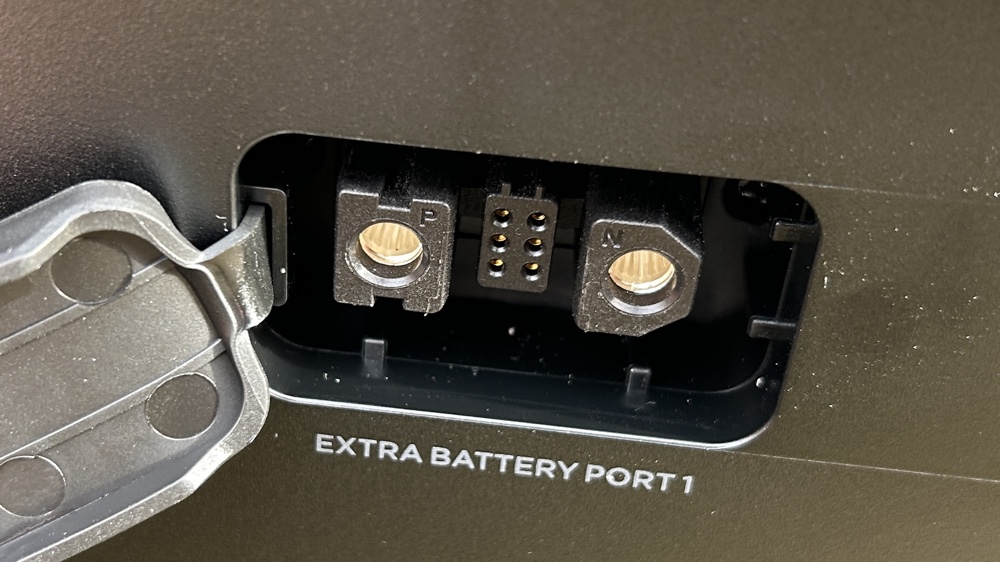

Above those AC and DC outputs is where you’ll find the inputs to juice the Delta 2 Max up, which brings me nicely onto…
Charging up
When relying solely on mains charging, the EcoFlow Delta 2 Max reaches 80% capacity in a fairly rapid 53 minutes, with a full charge taking just over an hour. This rapid charging capability is particularly advantageous for those on the go, requiring a quick battery top-up without lengthy delays.
However, it’s not all about charging up from your mains, as you’d expect. You also have, next to the main AC input, a pair on inputs for solar and car battery charging.
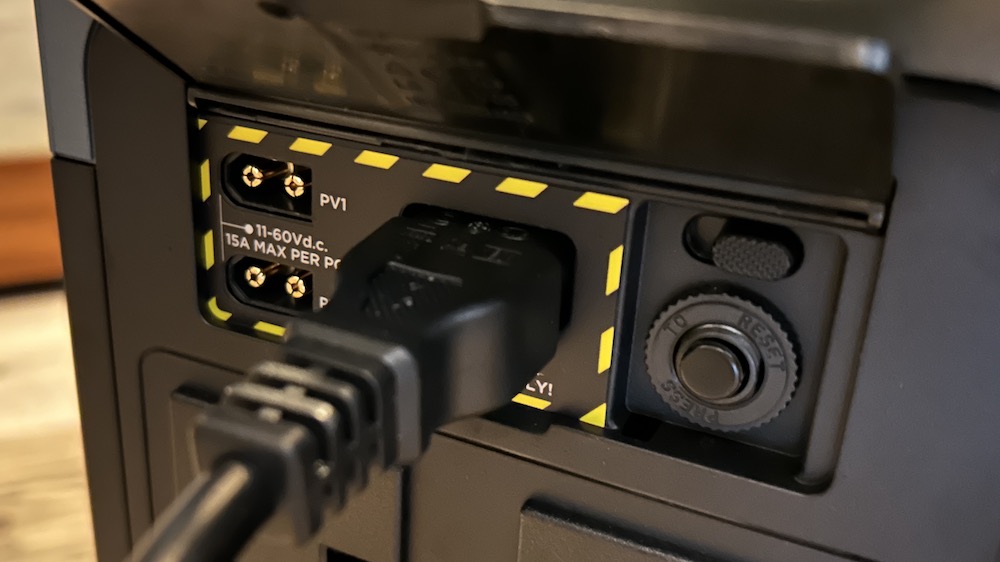

Solar is obviously a big part of the picture with the Delta 2 Max and it accommodates dual inputs for up to 1000W of solar power.
When utilizing the maximum solar input, EcoFlow indicates that the battery can be fully charged in 138 minutes, although actual charging times may vary based on sunlight intensity and panel positioning.
For even faster charging, users have the option to combine solar and AC power, leveraging a blend of 1800W AC and 600W solar power at maximum capacity. This integrated approach reduces the 80% charge time to just 43 minutes, enhancing the efficiency and versatility of the charging process.
You can also choose to juice up the EcoFlow using a car battery via the same solar input ports, and you’ll find the correct lead to do this in the box.
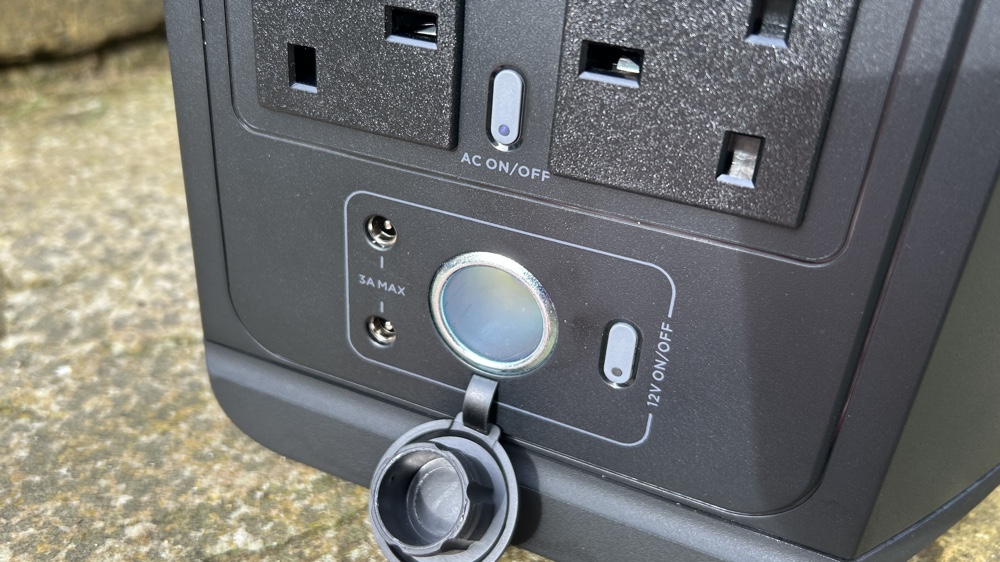

Display and the app
The LCD on the front of the Delta 2 Max provides a wealth of information on what’s going on with the machine, such as battery life left, input and output readings, time until full/empty and a whole lot more.
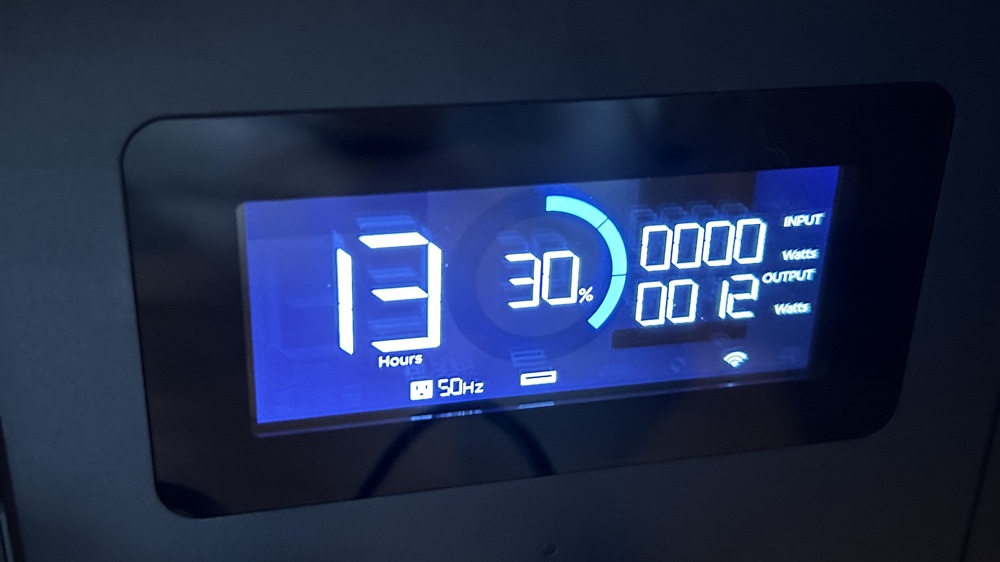

However, for more detailed information and granular controls, it’s best to get the Delta 2 Max paired up with the companion app.
The app expands the energy management capabilities, allowing functions like prioritizing solar input for energy savings, amending the battery backup reserve volume, or increasing AC charge speed.
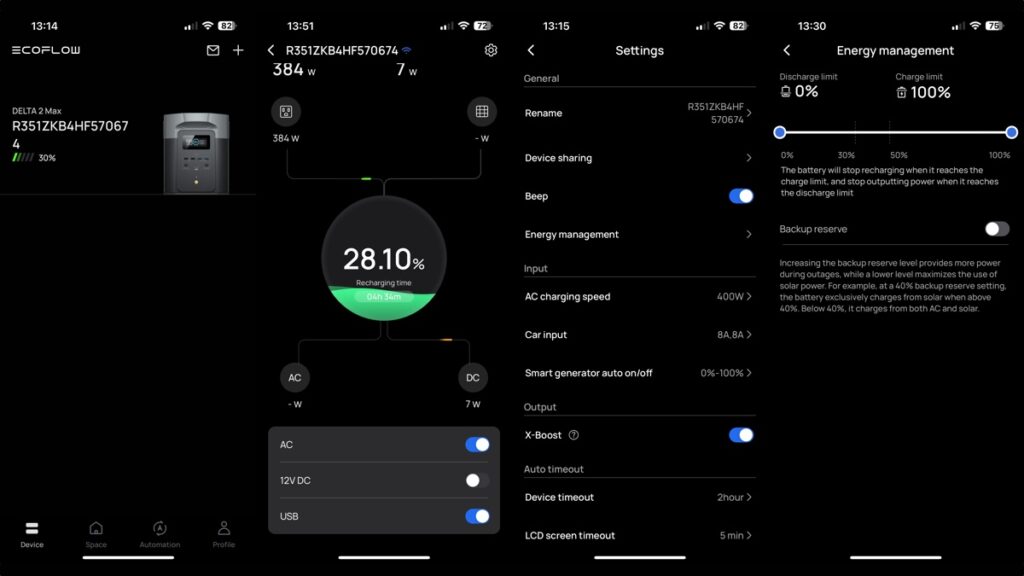

The app also uses a nifty little graphic, visualising how much power is coming in and out of the unit, which can be shown in a couple of different ways.
Performance and lifespan
The EcoFlow Delta 2 Max is built around its LiFePO4 batteries and EcoFlow tells us that they will maintain an 80% capacity after 3,000 charge and discharge cycles.
Doing some rough maths that means the EcoFlow can handle more than 5,500kWh of power over its lifespan.
90% of the time you won’t even notice that the Delta 2 Max is sitting there and doing its thing but, every so often, you do hear the fan kick into life. The whir isn’t too loud though and EcoFlow states that, at its loudest, the volume output is less than 30dB.
It’s a rugged machine, with reinforced corners and features an rubber anti-slip base and a UL94-5VA fire-resistant casing.
Final thoughts
More flexible than rivals when it comes to the amount of charging options and total output power, the EcoFlow Delta 2 Max is a fantastic option for a range of different back-up power solutions.
How we test
When we publish our reviews, you can rest assured that they are the result of “living with” long term tests.
Robot cleaners usually live within an ecosystem, or a range of products that – supposedly – all work in harmony. And they are designed to offer a range of different cleaning options. Therefore, it’s impossible to use a robo cleaner for a week and deliver a verdict.
Because we’re testing smart home kit all day, everyday, we know what matters and how a particular smart cleaning machine compares to alternatives that you might also be considering.
Our reviews are comprehensive, objective and fair and, of course, we are never paid directly to review a device.
Read our guide on how we test robot vacuum cleaners to learn more.
FAQs
You can add extra batteries, for 6kWh of power
Yes, you can charge the 2 Max with 11-60V 15A solar; single port 500W; dual port 1,000W
10 years is the claim by its makers, based on 3,000 charging cycles resulting in 80% performance.
EcoFlow Delta 2 Max: Specifications
| Specs | Details |
|---|---|
| Capacity | 2048 Wh |
| Extra Battery | Supports up to two DELTA 2 Max Smart Extra Batteries / DELTA Max Smart Extra Battery |
| AC Output | 4 outlets, 2400W total (Surge 4800W) |
| Max Device(s) Power (with X-Boost) | X-Boost 3100W |
| USB-A Output | 2 ports, 5V, 2.4A, 12W Max per port |
| USB-A Fast Charge | 2 ports, 5V, 2.4A / 9V, 2A / 12V, 1.5A, 18W Max |
| USB-C Output | 2 ports, 5/9/12/15/20V, 5A, 100W Max per port |
| Car Power Output | 1 port, 12.6V, 10A, 126W Max |
| DC5521 Output | 2 ports, 12.6V, 3A, 38W Max per port |
| AC Charging | X-stream Fast Charge 2300W, 10A |
| AC Input Voltage | 220- 240 V~ max. 10A 50/60 Hz |
| Solar Charging | 11-60V 15A, single port 500W; dual port 1,000W |
| Car Charging | Support 12V/24V battery, 8A |
| Battery Chemistry | LFP (LiFePO4 battery) |
| Cycle Life | 3000 cycles to 80+% capacity |
| Connectivity | Wi-Fi & Bluetooth |
| Dimensions | 497 × 242 × 305 mm /19.6 × 9.5 × 12 in |
| Net weight (lbs) | 50 lbs |
| Net weight (kg) | 23 kg |








